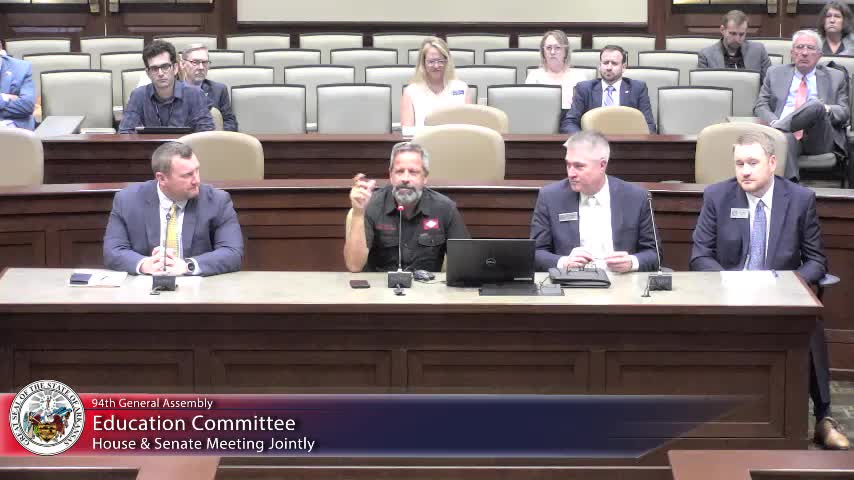Higher education leaders tackle faculty retention and apprenticeship barriers
September 05, 2023 | EDUCATION COMMITTEE - SENATE, Senate, Committees, Legislative, Arkansas
This article was created by AI summarizing key points discussed. AI makes mistakes, so for full details and context, please refer to the video of the full meeting. Please report any errors so we can fix them. Report an error »

The recent meeting of the Arkansas Senate Education Committee highlighted pressing issues in higher education, particularly focusing on strategies to enhance student retention and faculty recruitment. As the landscape of education evolves, the committee discussed innovative approaches to address barriers faced by students and institutions alike.
One of the key topics was the importance of attracting and retaining talented faculty members. Committee members expressed concern that the rising cost of living, reflected in the consumer price index, has not been matched by salary increases for educators. Over the past three years, faculty salaries have not kept pace with inflation, leading to challenges in retaining qualified staff. The committee emphasized that faculty play a crucial role in student success, as they are instrumental in retaining students and ensuring they graduate with the necessary qualifications.
Additionally, the committee explored alternative educational pathways, such as nontraditional apprenticeships and industry partnerships. These initiatives aim to bridge the gap between education and real-world experience, allowing students to gain practical skills while pursuing their degrees. The discussion included the potential for adjunct faculty from various industries to bring their expertise into the classroom, thereby enriching the educational experience.
Another significant point raised was the issue of commercial driver licenses (CDLs) for young graduates. A senator highlighted the challenge faced by new graduates who obtain their CDL but struggle to find insurance coverage due to age restrictions and experience requirements. This barrier can hinder job opportunities for young drivers, prompting the committee to consider solutions that could facilitate smoother transitions into the workforce.
In conclusion, the Arkansas Senate Education Committee's discussions underscored the urgent need for strategic solutions to enhance faculty retention and student success. As the committee continues to address these challenges, the focus remains on creating a more supportive and effective educational environment that meets the needs of both students and educators. The next steps will involve further exploration of these issues and the development of actionable strategies to implement the proposed solutions.
One of the key topics was the importance of attracting and retaining talented faculty members. Committee members expressed concern that the rising cost of living, reflected in the consumer price index, has not been matched by salary increases for educators. Over the past three years, faculty salaries have not kept pace with inflation, leading to challenges in retaining qualified staff. The committee emphasized that faculty play a crucial role in student success, as they are instrumental in retaining students and ensuring they graduate with the necessary qualifications.
Additionally, the committee explored alternative educational pathways, such as nontraditional apprenticeships and industry partnerships. These initiatives aim to bridge the gap between education and real-world experience, allowing students to gain practical skills while pursuing their degrees. The discussion included the potential for adjunct faculty from various industries to bring their expertise into the classroom, thereby enriching the educational experience.
Another significant point raised was the issue of commercial driver licenses (CDLs) for young graduates. A senator highlighted the challenge faced by new graduates who obtain their CDL but struggle to find insurance coverage due to age restrictions and experience requirements. This barrier can hinder job opportunities for young drivers, prompting the committee to consider solutions that could facilitate smoother transitions into the workforce.
In conclusion, the Arkansas Senate Education Committee's discussions underscored the urgent need for strategic solutions to enhance faculty retention and student success. As the committee continues to address these challenges, the focus remains on creating a more supportive and effective educational environment that meets the needs of both students and educators. The next steps will involve further exploration of these issues and the development of actionable strategies to implement the proposed solutions.
Don't Miss a Word: See the Full Meeting!
Go beyond summaries. Unlock every video, transcript, and key insight with a Founder Membership.
✓
Get instant access to full meeting videos
✓
Search and clip any phrase from complete transcripts
✓
Receive AI-powered summaries & custom alerts
✓
Enjoy lifetime, unrestricted access to government data
30-day money-back guarantee

